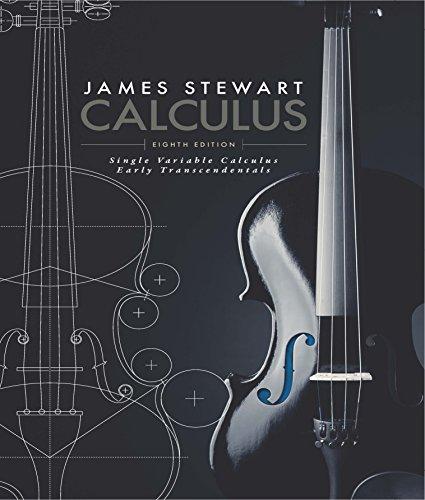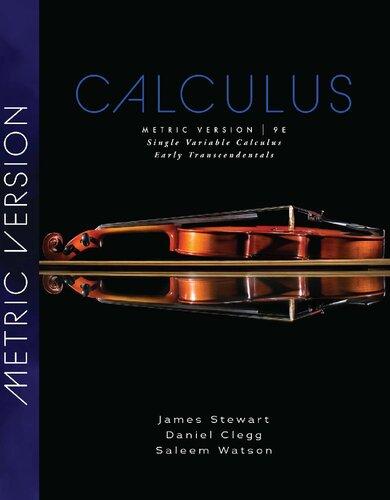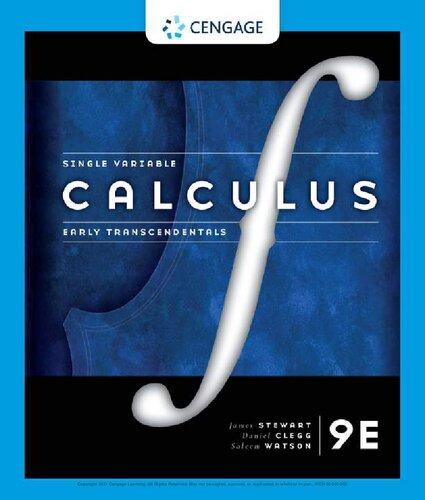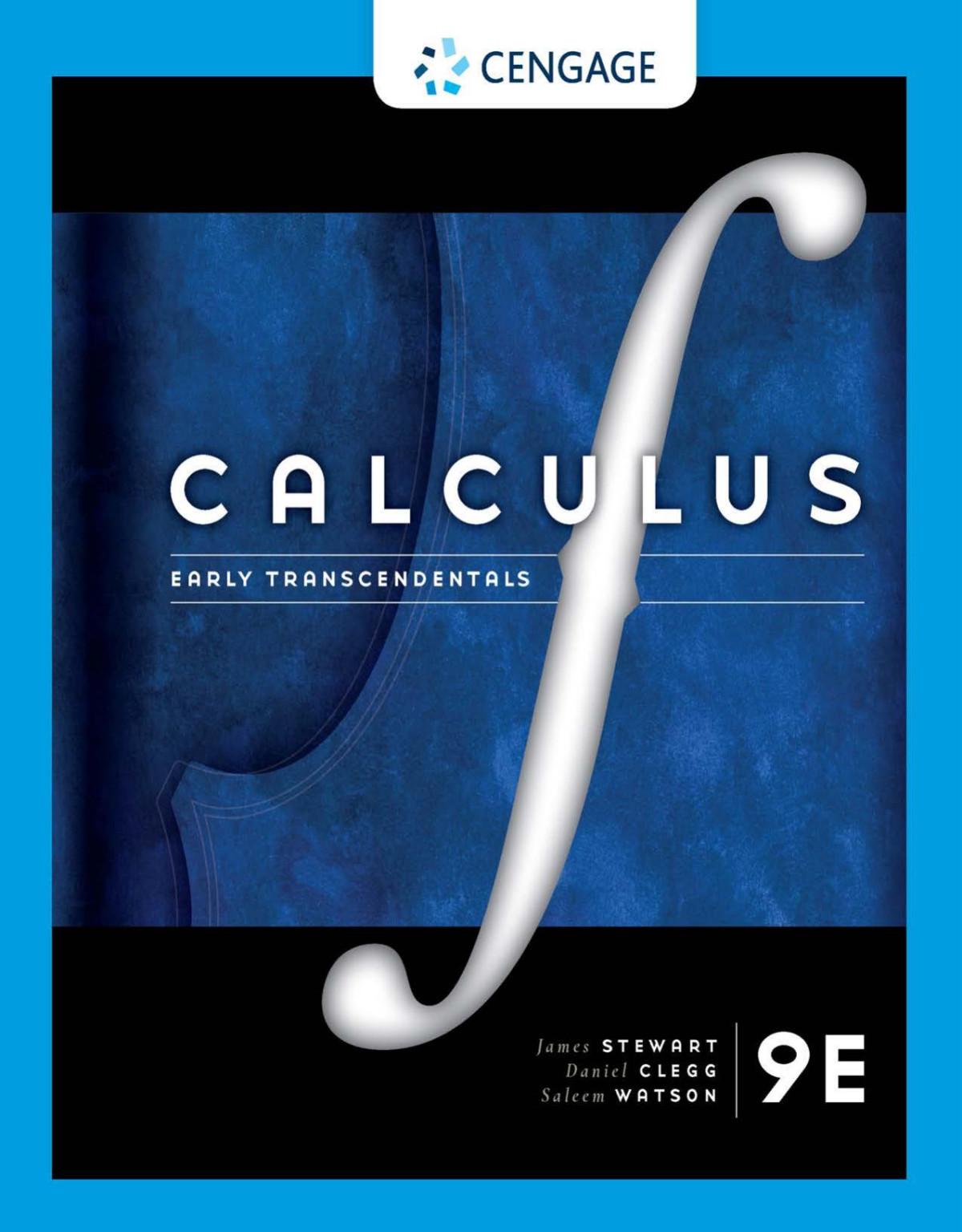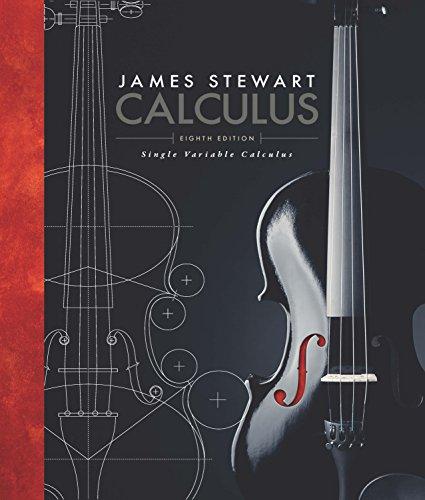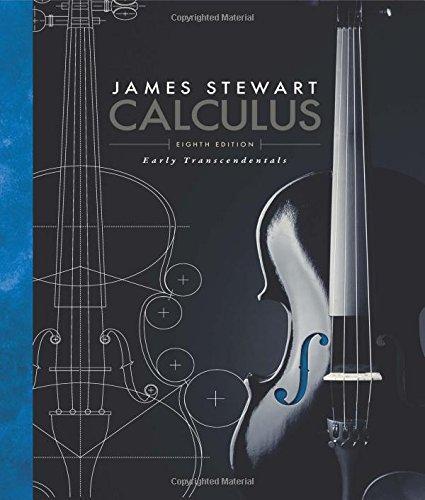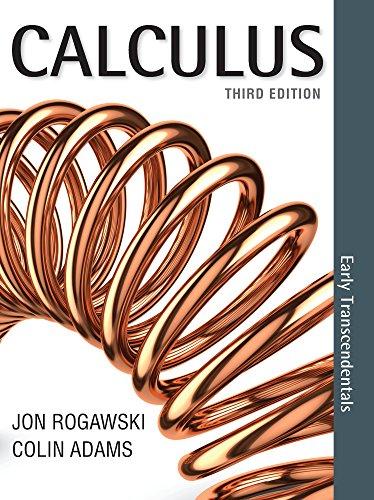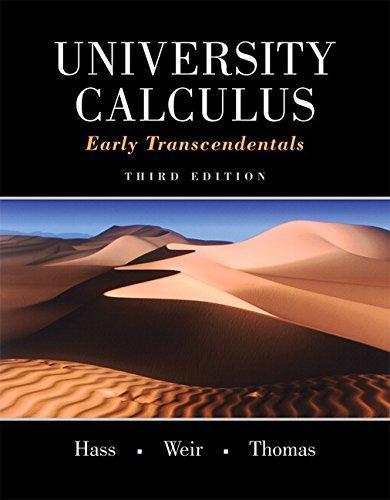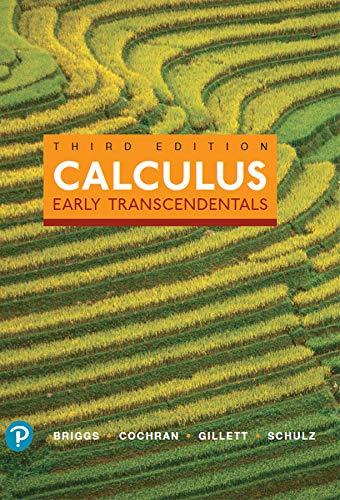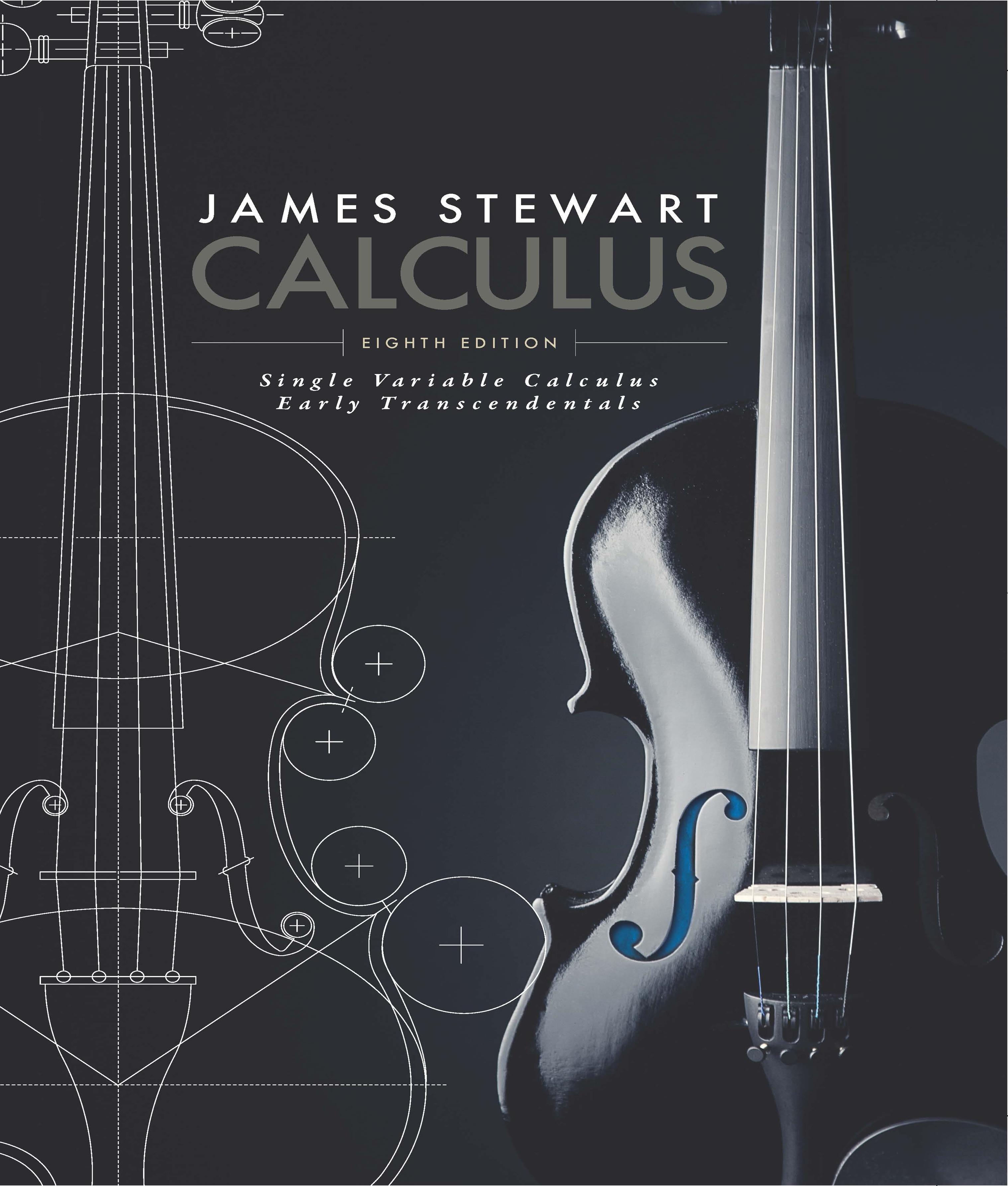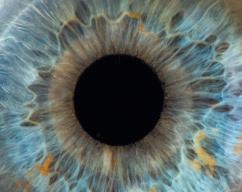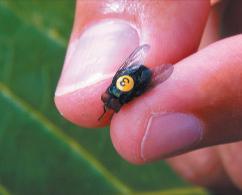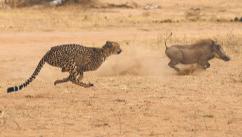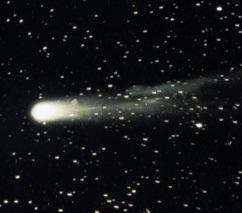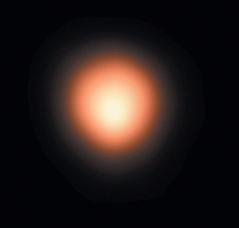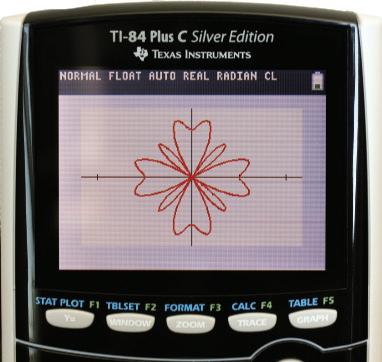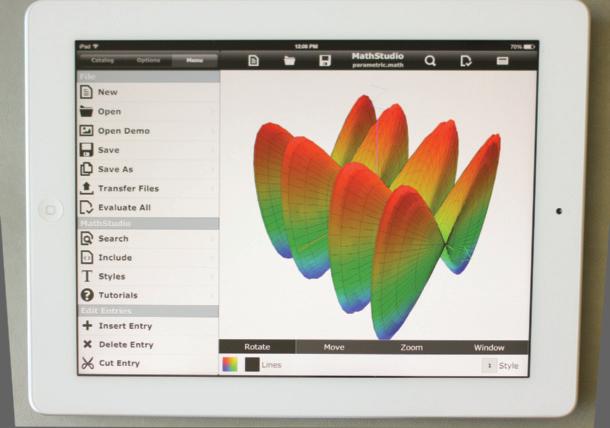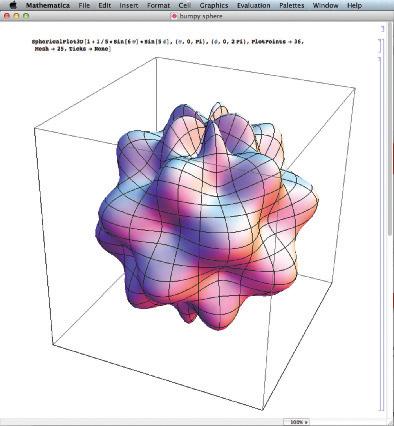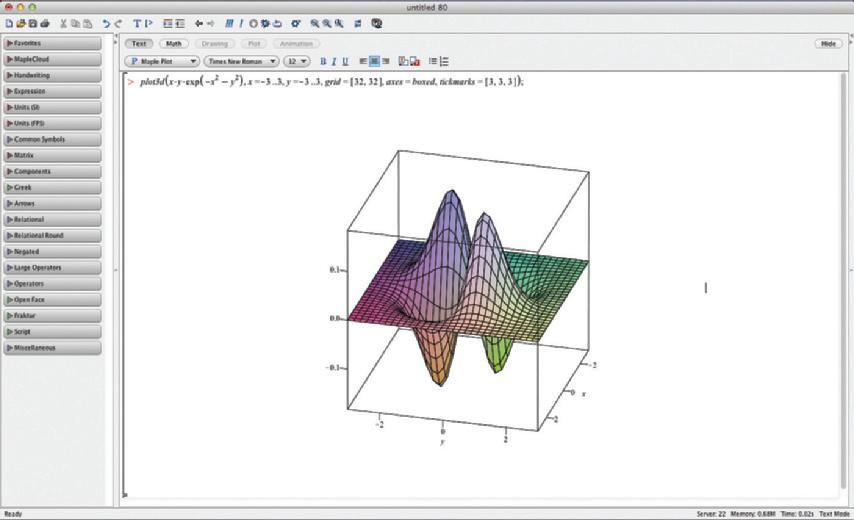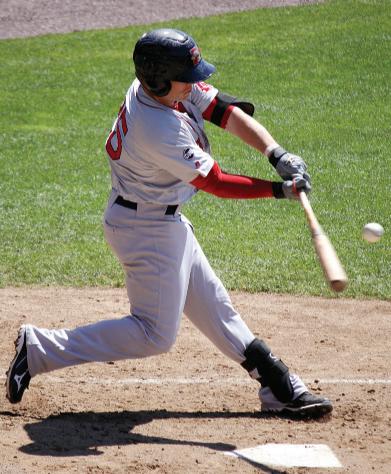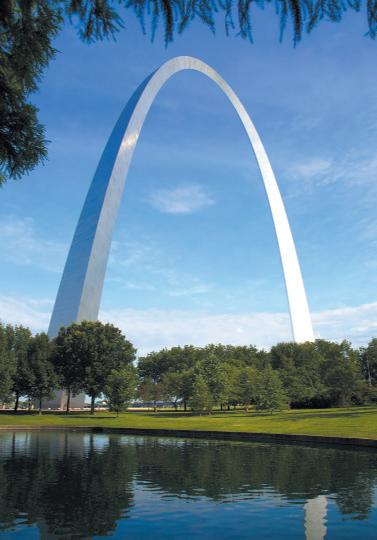Preface
A great discovery solves a great problem but there is a grain of discovery in the solution of any problem. Your problem may be modest; but if it challenges your curiosity and brings into play your inventive faculties, and if you solve it by your own means, you may experience the tension and enjoy the triumph of discovery.
george polya
The art of teaching, Mark Van Doren said, is the art of assisting discovery. I have tried to write a book that assists students in discovering calculus—both for its practical power and its surprising beauty. In this edition, as in the first seven editions, I aim to convey to the student a sense of the utility of calculus and develop technical competence, but I also strive to give some appreciation for the intrinsic beauty of the subject. Newton undoubtedly experienced a sense of triumph when he made his great discoveries. I want students to share some of that excitement.
The emphasis is on understanding concepts. I think that nearly everybody agrees that this should be the primary goal of calculus instruction. In fact, the impetus for the current calculus reform movement came from the Tulane Conference in 1986, which formulated as their first recommendation:
Focus on conceptual understanding.
I have tried to implement this goal through the Rule of Three: “Topics should be presented geometrically, numerically, and algebraically.” Visualization, numerical and graphical experimentation, and other approaches have changed how we teach conceptual reasoning in fundamental ways. More recently, the Rule of Three has been expanded to become the Rule of Four by emphasizing the verbal, or descriptive, point of view as well.
In writing the eighth edition my premise has been that it is possible to achieve conceptual understanding and still retain the best traditions of traditional calculus. The book contains elements of reform, but within the context of a traditional curriculum.
I have written several other calculus textbooks that might be preferable for some instructors. Most of them also come in single variable and multivariable versions.
● Calculus, Eighth Edition, is similar to the present textbook except that the exponential, logarithmic, and inverse trigonometric functions are covered in the second semester.
● Essential Calculus, Second Edition, is a much briefer book (840 pages), though it contains almost all of the topics in Calculus, Eighth Edition. The relative brevity is achieved through briefer exposition of some topics and putting some features on the website.
● Essential Calculus: Early Transcendentals, Second Edition, resembles Essential Calculus, but the exponential, logarithmic, and inverse trigonometric functions are covered in Chapter 3.
● Calculus: Concepts and Contexts, Fourth Edition, emphasizes conceptual understanding even more strongly than this book. The coverage of topics is not encyclopedic and the material on transcendental functions and on parametric equations is woven throughout the book instead of being treated in separate chapters.
● Calculus: Early Vectors introduces vectors and vector functions in the first semester and integrates them throughout the book. It is suitable for students taking engineering and physics courses concurrently with calculus.
● Brief Applied Calculus is intended for students in business, the social sciences, and the life sciences.
● Biocalculus: Calculus for the Life Sciences is intended to show students in the life sciences how calculus relates to biology.
● Biocalculus: Calculus, Probability, and Statistics for the Life Sciences contains all the content of Biocalculus: Calculus for the Life Sciences as well as three additional chapters on probability and statistics.
The changes have resulted from talking with my colleagues and students at the University of Toronto and from reading journals, as well as suggestions from users and reviewers. Here are some of the many improvements that I’ve incorporated into this edition:
● The data in examples and exercises have been updated to be more timely.
● New examples have been added (see Examples 6.1.5 and 11.2.5, for instance). And the solutions to some of the existing examples have been amplified.
● Two new projects have been added: The project Controlling Red Blood Cell Loss During Surgery (page 244) describes the ANH procedure, in which blood is extracted from the patient before an operation and is replaced by saline solution. This dilutes the patient’s blood so that fewer red blood cells are lost during bleeding and the extracted blood is returned to the patient after surgery. The project Planes and Birds: Minimizing Energy (page 344) asks how birds can minimize power and energy by flapping their wings versus gliding.
● More than 20% of the exercises in each chapter are new. Here are some of my favorites: 2.7.61, 2.8.36–38, 3.1.79–80, 3.11.54, 4.1.69, 4.3.34, 4.3.66, 4.4.80, 4.7.39, 4.7.67, 5.1.19–20, 5.2.67–68, 5.4.70, 6.1.51, and 8.1.39. In addition, there are some good new Problems Plus. (See Problems 12–14 on page 272, Problem 13 on page 363, and Problems 16–17 on page 426.)
conceptual e xercises
The most important way to foster conceptual understanding is through the problems that we assign. To that end I have devised various types of problems. Some exercise sets begin with requests to explain the meanings of the basic concepts of the section. (See, for instance, the first few exercises in Sections 2.2, 2.5, and 11.2.) Similarly, all the review sections begin with a Concept Check and a True-False Quiz. Other exercises test conceptual understanding through graphs or tables (see Exercises 2.7.17, 2.8.35–38, 2.8.47–52, 9.1.11–13, 10.1.24–27, and 11.10.2).
Another type of exercise uses verbal description to test conceptual understanding (see Exercises 2.5.10, 2.8.66, 4.3.69–70, and 7.8.67). I particularly value problems that combine and compare graphical, numerical, and algebraic approaches (see Exercises 2.6.45–46, 3.7.27, and 9.4.4).
graded e xercise Sets
Each exercise set is carefully graded, progressing from basic conceptual exercises and skill-development problems to more challenging problems involving applications and proofs.
real-world data
My assistants and I spent a great deal of time looking in libraries, contacting companies and government agencies, and searching the Internet for interesting real-world data to introduce, motivate, and illustrate the concepts of calculus. As a result, many of the examples and exercises deal with functions defined by such numerical data or graphs. See, for instance, Figure 1 in Section 1.1 (seismograms from the Northridge earthquake), Exercise 2.8.35 (unemployment rates), Exercise 5.1.16 (velocity of the space shuttle Endeavour), and Figure 4 in Section 5.4 (San Francisco power consumption).
Projects
One way of involving students and making them active learners is to have them work (perhaps in groups) on extended projects that give a feeling of substantial accomplishment when completed. I have included four kinds of projects: Applied Projects involve applications that are designed to appeal to the imagination of students. The project after Section 9.3 asks whether a ball thrown upward takes longer to reach its maximum height or to fall back to its original height. (The answer might surprise you.) Laboratory Projects involve technology; the one following Section 10.2 shows how to use Bézier curves to design shapes that represent letters for a laser printer. Writing Projects ask students to compare present-day methods with those of the founders of calculus—Fermat’s method for finding tangents, for instance. Suggested references are supplied. Discovery Projects anticipate results to be discussed later or encourage discovery through pattern recognition (see the one following Section 7.6). Additional projects can be found in the Instructor’s Guide (see, for instance, Group Exercise 5.1: Position from Samples).
Problem Solving
Students usually have difficulties with problems for which there is no single well-defined procedure for obtaining the answer. I think nobody has improved very much on George Polya’s four-stage problem-solving strategy and, accordingly, I have included a version of his problem-solving principles following Chapter 1. They are applied, both explicitly and implicitly, throughout the book. After the other chapters I have placed sections called Problems Plus, which feature examples of how to tackle challenging calculus problems. In selecting the varied problems for these sections I kept in mind the following advice from David Hilbert: “A mathematical problem should be difficult in order to entice us, yet not inaccessible lest it mock our efforts.” When I put these challenging problems on assignments and tests I grade them in a different way. Here I reward a student significantly for ideas toward a solution and for recognizing which problem-solving principles are relevant.
Technology
The availability of technology makes it not less important but more important to clearly understand the concepts that underlie the images on the screen. But, when properly used,
graphing calculators and computers are powerful tools for discovering and understanding those concepts. This textbook can be used either with or without technology and I use two special symbols to indicate clearly when a particular type of machine is required. The icon ; indicates an exercise that definitely requires the use of such technology, but that is not to say that it can’t be used on the other exercises as well. The symbol CAS is reserved for problems in which the full resources of a computer algebra system (like Maple, Mathematica, or the TI-89) are required. But technology doesn’t make pencil and paper obsolete. Hand calculation and sketches are often preferable to technology for illustrating and reinforcing some concepts. Both instructors and students need to develop the ability to decide where the hand or the machine is appropriate.
Tools for enriching calculus
TEC is a companion to the text and is intended to enrich and complement its contents. (It is now accessible in the eBook via CourseMate and Enhanced WebAssign. Selected Visuals and Modules are available at www.stewartcalculus.com.) Developed by Harvey Keynes, Dan Clegg, Hubert Hohn, and myself, TEC uses a discovery and exploratory approach. In sections of the book where technology is particularly appropriate, marginal icons direct students to TEC Modules that provide a laboratory environment in which they can explore the topic in different ways and at different levels. Visuals are animations of figures in text; Modules are more elaborate activities and include exercises. Instructors can choose to become involved at several different levels, ranging from simply encouraging students to use the Visuals and Modules for independent exploration, to assigning specific exercises from those included with each Module, or to creating additional exercises, labs, and projects that make use of the Visuals and Modules.
TEC also includes Homework Hints for representative exercises (usually odd-numbered) in every section of the text, indicated by printing the exercise number in red. These hints are usually presented in the form of questions and try to imitate an effective teaching assistant by functioning as a silent tutor. They are constructed so as not to reveal any more of the actual solution than is minimally necessary to make further progress.
enhanced webassign
Technology is having an impact on the way homework is assigned to students, particularly in large classes. The use of online homework is growing and its appeal depends on ease of use, grading precision, and reliability. With the Eighth Edition we have been working with the calculus community and WebAssign to develop an online homework system. Up to 70% of the exercises in each section are assignable as online homework, including free response, multiple choice, and multi-part formats.
The system also includes Active Examples, in which students are guided in step-bystep tutorials through text examples, with links to the textbook and to video solutions.
website
Visit CengageBrain.com or stewartcalculus.com for these additional materials:
● Homework Hints
● Algebra Review
● Lies My Calculator and Computer Told Me
● History of Mathematics, with links to the better historical websites
● Additional Topics (complete with exercise sets): Fourier Series, Formulas for the Remainder Term in Taylor Series, Rotation of Axes
diagnostic Tests
a Preview of calculus
1 functions and models
● Archived Problems (Drill exercises that appeared in previous editions, together with their solutions)
● Challenge Problems (some from the Problems Plus sections from prior editions)
● Links, for particular topics, to outside Web resources
● Selected Visuals and Modules from Tools for Enriching Calculus (TEC)
2 limits and derivatives
The book begins with four diagnostic tests, in Basic Algebra, Analytic Geometry, Functions, and Trigonometry.
This is an overview of the subject and includes a list of questions to motivate the study of calculus.
From the beginning, multiple representations of functions are stressed: verbal, numerical, visual, and algebraic. A discussion of mathematical models leads to a review of the standard functions, including exponential and logarithmic functions, from these four points of view.
The material on limits is motivated by a prior discussion of the tangent and velocity problems. Limits are treated from descriptive, graphical, numerical, and algebraic points of view. Section 2.4, on the precise definition of a limit, is an optional section. Sections 2.7 and 2.8 deal with derivatives (especially with functions defined graphically and numerically) before the differentiation rules are covered in Chapter 3. Here the examples and exercises explore the meanings of derivatives in various contexts. Higher derivatives are introduced in Section 2.8.
3 differentiation rules
4 applications of differentiation
5 integrals
All the basic functions, including exponential, logarithmic, and inverse trigonometric functions, are differentiated here. When derivatives are computed in applied situations, students are asked to explain their meanings. Exponential growth and decay are now covered in this chapter.
The basic facts concerning extreme values and shapes of curves are deduced from the Mean Value Theorem. Graphing with technology emphasizes the interaction between calculus and calculators and the analysis of families of curves. Some substantial optimization problems are provided, including an explanation of why you need to raise your head 42° to see the top of a rainbow.
The area problem and the distance problem serve to motivate the definite integral, with sigma notation introduced as needed. (Full coverage of sigma notation is provided in Appendix E.) Emphasis is placed on explaining the meanings of integrals in various contexts and on estimating their values from graphs and tables.
6 applications of integration
Here I present the applications of integration—area, volume, work, average value—that can reasonably be done without specialized techniques of integration. General methods are emphasized. The goal is for students to be able to divide a quantity into small pieces, estimate with Riemann sums, and recognize the limit as an integral.
7 Techniques of integration
All the standard methods are covered but, of course, the real challenge is to be able to recognize which technique is best used in a given situation. Accordingly, in Section 7.5, I present a strategy for integration. The use of computer algebra systems is discussed in Section 7.6.
8 further applications of integration
9 differential equations
Here are the applications of integration—arc length and surface area—for which it is useful to have available all the techniques of integration, as well as applications to biology, economics, and physics (hydrostatic force and centers of mass). I have also included a section on probability. There are more applications here than can realistically be covered in a given course. Instructors should select applications suitable for their students and for which they themselves have enthusiasm.
Modeling is the theme that unifies this introductory treatment of differential equations. Direction fields and Euler’s method are studied before separable and linear equations are solved explicitly, so that qualitative, numerical, and analytic approaches are given equal consideration. These methods are applied to the exponential, logistic, and other models for population growth. The first four or five sections of this chapter serve as a good introduction to first-order differential equations. An optional final section uses predatorprey models to illustrate systems of differential equations.
10 Parametric equations and Polar coordinates
11 infinite Sequences and Series
This chapter introduces parametric and polar curves and applies the methods of calculus to them. Parametric curves are well suited to laboratory projects; the two presented here involve families of curves and Bézier curves. A brief treatment of conic sections in polar coordinates prepares the way for Kepler’s Laws in Chapter 13.
The convergence tests have intuitive justifications (see page 719) as well as formal proofs. Numerical estimates of sums of series are based on which test was used to prove convergence. The emphasis is on Taylor series and polynomials and their applications to physics. Error estimates include those from graphing devices.
Single Variable Calculus, Early Transcendentals, Eighth Edition, is supported by a complete set of ancillaries developed under my direction. Each piece has been designed to enhance student understanding and to facilitate creative instruction. The tables on pages xx–xxi describe each of these ancillaries.
The preparation of this and previous editions has involved much time spent reading the reasoned (but sometimes contradictory) advice from a large number of astute reviewers. I greatly appreciate the time they spent to understand my motivation for the approach taken. I have learned something from each of them.
eighth edition reviewers
Jay Abramson, Arizona State University
Adam Bowers, University of California San Diego
Neena Chopra, The Pennsylvania State University
Edward Dobson, Mississippi State University
Isaac Goldbring, University of Illinois at Chicago
Lea Jenkins, Clemson University
Rebecca Wahl, Butler University
Technology reviewers
Maria Andersen, Muskegon Community College
Eric Aurand, Eastfield College
Joy Becker, University of Wisconsin–Stout
Przemyslaw Bogacki, Old Dominion University
Amy Elizabeth Bowman, University of Alabama in Huntsville
Monica Brown, University of Missouri–St. Louis
Roxanne Byrne, University of Colorado at Denver and Health Sciences Center
Teri Christiansen, University of Missouri–Columbia
Bobby Dale Daniel, Lamar University
Jennifer Daniel, Lamar University
Andras Domokos, California State University, Sacramento
Timothy Flaherty, Carnegie Mellon University
Lee Gibson, University of Louisville
Jane Golden, Hillsborough Community College
Semion Gutman, University of Oklahoma
Diane Hoffoss, University of San Diego
Lorraine Hughes, Mississippi State University
Jay Jahangiri, Kent State University
John Jernigan, Community College of Philadelphia
Previous edition reviewers
B. D. Aggarwala, University of Calgary
John Alberghini, Manchester Community College
Michael Albert, Carnegie-Mellon University
Daniel Anderson, University of Iowa
Amy Austin, Texas A&M University
Donna J. Bailey, Northeast Missouri State University
Wayne Barber, Chemeketa Community College
Marilyn Belkin, Villanova University
Neil Berger, University of Illinois, Chicago
David Berman, University of New Orleans
Anthony J. Bevelacqua, University of North Dakota
Richard Biggs, University of Western Ontario
Robert Blumenthal, Oglethorpe University
Martina Bode, Northwestern University
Barbara Bohannon, Hofstra University
Jay Bourland, Colorado State University
Philip L. Bowers, Florida State University
Amy Elizabeth Bowman, University of Alabama in Huntsville
Stephen W. Brady, Wichita State University
Michael Breen, Tennessee Technological University
Robert N. Bryan, University of Western Ontario
Brian Karasek, South Mountain Community College
Jason Kozinski, University of Florida
Carole Krueger, The University of Texas at Arlington
Ken Kubota, University of Kentucky
John Mitchell, Clark College
Donald Paul, Tulsa Community College
Chad Pierson, University of Minnesota, Duluth
Lanita Presson, University of Alabama in Huntsville
Karin Reinhold, State University of New York at Albany
Thomas Riedel, University of Louisville
Christopher Schroeder, Morehead State University
Angela Sharp, University of Minnesota, Duluth
Patricia Shaw, Mississippi State University
Carl Spitznagel, John Carroll University
Mohammad Tabanjeh, Virginia State University
Capt. Koichi Takagi, United States Naval Academy
Lorna TenEyck, Chemeketa Community College
Roger Werbylo, Pima Community College
David Williams, Clayton State University
Zhuan Ye, Northern Illinois University
David Buchthal, University of Akron
Jenna Carpenter, Louisiana Tech University
Jorge Cassio, Miami-Dade Community College
Jack Ceder, University of California, Santa Barbara
Scott Chapman, Trinity University
Zhen-Qing Chen, University of Washington—Seattle
James Choike, Oklahoma State University
Barbara Cortzen, DePaul University
Carl Cowen, Purdue University
Philip S. Crooke, Vanderbilt University
Charles N. Curtis, Missouri Southern State College
Daniel Cyphert, Armstrong State College
Robert Dahlin
M. Hilary Davies, University of Alaska Anchorage
Gregory J. Davis, University of Wisconsin–Green Bay
Elias Deeba, University of Houston–Downtown
Daniel DiMaria, Suffolk Community College
Seymour Ditor, University of Western Ontario
Greg Dresden, Washington and Lee University
Daniel Drucker, Wayne State University
Kenn Dunn, Dalhousie University
Dennis Dunninger, Michigan State University
Bruce Edwards, University of Florida
David Ellis, San Francisco State University
John Ellison, Grove City College
Martin Erickson, Truman State University
Garret Etgen, University of Houston
Theodore G. Faticoni, Fordham University
Laurene V. Fausett, Georgia Southern University
Norman Feldman, Sonoma State University
Le Baron O. Ferguson, University of California—Riverside
Newman Fisher, San Francisco State University
José D. Flores, The University of South Dakota
William Francis, Michigan Technological University
James T. Franklin, Valencia Community College, East
Stanley Friedlander, Bronx Community College
Patrick Gallagher, Columbia University–New York
Paul Garrett, University of Minnesota–Minneapolis
Frederick Gass, Miami University of Ohio
Bruce Gilligan, University of Regina
Matthias K. Gobbert, University of Maryland, Baltimore County
Gerald Goff, Oklahoma State University
Stuart Goldenberg, California Polytechnic State University
John A. Graham, Buckingham Browne & Nichols School
Richard Grassl, University of New Mexico
Michael Gregory, University of North Dakota
Charles Groetsch, University of Cincinnati
Paul Triantafilos Hadavas, Armstrong Atlantic State University
Salim M. Haïdar, Grand Valley State University
D. W. Hall, Michigan State University
Robert L. Hall, University of Wisconsin–Milwaukee
Howard B. Hamilton, California State University, Sacramento
Darel Hardy, Colorado State University
Shari Harris, John Wood Community College
Gary W. Harrison, College of Charleston
Melvin Hausner, New York University/Courant Institute
Curtis Herink, Mercer University
Russell Herman, University of North Carolina at Wilmington
Allen Hesse, Rochester Community College
Randall R. Holmes, Auburn University
James F. Hurley, University of Connecticut
Amer Iqbal, University of Washington—Seattle
Matthew A. Isom, Arizona State University
Gerald Janusz, University of Illinois at Urbana-Champaign
John H. Jenkins, Embry-Riddle Aeronautical University, Prescott Campus
Clement Jeske, University of Wisconsin, Platteville
Carl Jockusch, University of Illinois at Urbana-Champaign
Jan E. H. Johansson, University of Vermont
Jerry Johnson, Oklahoma State University
Zsuzsanna M. Kadas, St. Michael’s College
Nets Katz, Indiana University Bloomington
Matt Kaufman
Matthias Kawski, Arizona State University
Frederick W. Keene, Pasadena City College
Robert L. Kelley, University of Miami
Akhtar Khan, Rochester Institute of Technology
Marianne Korten, Kansas State University
Virgil Kowalik, Texas A&I University
Kevin Kreider, University of Akron
Leonard Krop, DePaul University
Mark Krusemeyer, Carleton College
John C. Lawlor, University of Vermont
Christopher C. Leary, State University of New York at Geneseo
David Leeming, University of Victoria
Sam Lesseig, Northeast Missouri State University
Phil Locke, University of Maine
Joyce Longman, Villanova University
Joan McCarter, Arizona State University
Phil McCartney, Northern Kentucky University
Igor Malyshev, San Jose State University
Larry Mansfield, Queens College
Mary Martin, Colgate University
Nathaniel F. G. Martin, University of Virginia
Gerald Y. Matsumoto, American River College
James McKinney, California State Polytechnic University, Pomona
Tom Metzger, University of Pittsburgh
Richard Millspaugh, University of North Dakota
Lon H. Mitchell, Virginia Commonwealth University
Michael Montaño, Riverside Community College
Teri Jo Murphy, University of Oklahoma
Martin Nakashima, California State Polytechnic University, Pomona
Ho Kuen Ng, San Jose State University
Richard Nowakowski, Dalhousie University
Hussain S. Nur, California State University, Fresno
Norma Ortiz-Robinson, Virginia Commonwealth University
Wayne N. Palmer, Utica College
Vincent Panico, University of the Pacific
F. J. Papp, University of Michigan–Dearborn
Mike Penna, Indiana University–Purdue University Indianapolis
Mark Pinsky, Northwestern University
Lothar Redlin, The Pennsylvania State University
Joel W. Robbin, University of Wisconsin–Madison
Lila Roberts, Georgia College and State University
E. Arthur Robinson, Jr., The George Washington University
Richard Rockwell, Pacific Union College
Rob Root, Lafayette College
Richard Ruedemann, Arizona State University
David Ryeburn, Simon Fraser University
Richard St. Andre, Central Michigan University
Ricardo Salinas, San Antonio College
Robert Schmidt, South Dakota State University
Eric Schreiner, Western Michigan University
Mihr J. Shah, Kent State University–Trumbull
Qin Sheng, Baylor University
Theodore Shifrin, University of Georgia
Wayne Skrapek, University of Saskatchewan
Larry Small, Los Angeles Pierce College
Teresa Morgan Smith, Blinn College
William Smith, University of North Carolina
Donald W. Solomon, University of Wisconsin–Milwaukee
Edward Spitznagel, Washington University
Joseph Stampfli, Indiana University
Kristin Stoley, Blinn College
M. B. Tavakoli, Chaffey College
Magdalena Toda, Texas Tech University
Ruth Trygstad, Salt Lake Community College
Paul Xavier Uhlig, St. Mary’s University, San Antonio
Stan Ver Nooy, University of Oregon
Andrei Verona, California State University–Los Angeles
Klaus Volpert, Villanova University
Russell C. Walker, Carnegie Mellon University
William L. Walton, McCallie School
Peiyong Wang, Wayne State University
Jack Weiner, University of Guelph
Alan Weinstein, University of California, Berkeley
Theodore W. Wilcox, Rochester Institute of Technology
Steven Willard, University of Alberta
Robert Wilson, University of Wisconsin–Madison
Jerome Wolbert, University of Michigan–Ann Arbor
Dennis H. Wortman, University of Massachusetts, Boston
Mary Wright, Southern Illinois University–Carbondale
Paul M. Wright, Austin Community College
Xian Wu, University of South Carolina
In addition, I would like to thank R. B. Burckel, Bruce Colletti, David Behrman, John Dersch, Gove Effinger, Bill Emerson, Dan Kalman, Quyan Khan, Alfonso Gracia-Saz, Allan MacIsaac, Tami Martin, Monica Nitsche, Lamia Raffo, Norton Starr, and Jim Trefzger for their suggestions; Al Shenk and Dennis Zill for permission to use exercises from their calculus texts; COMAP for permission to use project material; George Bergman, David Bleecker, Dan Clegg, Victor Kaftal, Anthony Lam, Jamie Lawson, Ira Rosenholtz, Paul Sally, Lowell Smylie, and Larry Wallen for ideas for exercises; Dan Drucker for the roller derby project; Thomas Banchoff, Tom Farmer, Fred Gass, John Ramsay, Larry Riddle, Philip Straffin, and Klaus Volpert for ideas for projects; Dan Anderson, Dan Clegg, Jeff Cole, Dan Drucker, and Barbara Frank for solving the new exercises and suggesting ways to improve them; Marv Riedesel and Mary Johnson for accuracy in proofreading; Andy Bulman-Fleming, Lothar Redlin, Gina Sanders, and Saleem Watson for additional proofreading; and Jeff Cole and Dan Clegg for their careful preparation and proofreading of the answer manuscript.
In addition, I thank those who have contributed to past editions: Ed Barbeau, George Bergman, Fred Brauer, Andy Bulman-Fleming, Bob Burton, David Cusick, Tom DiCiccio, Garret Etgen, Chris Fisher, Leon Gerber, Stuart Goldenberg, Arnold Good, Gene Hecht, Harvey Keynes, E. L. Koh, Zdislav Kovarik, Kevin Kreider, Emile LeBlanc, David Leep, Gerald Leibowitz, Larry Peterson, Mary Pugh, Lothar Redlin, Carl Riehm, John Ringland, Peter Rosenthal, Dusty Sabo, Doug Shaw, Dan Silver, Simon Smith, Saleem Watson, Alan Weinstein, and Gail Wolkowicz.
I also thank Kathi Townes, Stephanie Kuhns, Kristina Elliott, and Kira Abdallah of TECHarts for their production services and the following Cengage Learning staff: Cheryll Linthicum, content project manager; Stacy Green, senior content developer; Samantha Lugtu, associate content developer; Stephanie Kreuz, product assistant; Guanglei Zhang, media developer; Ryan Ahern, marketing manager; and Vernon Boes, art director. They have all done an outstanding job.
I have been very fortunate to have worked with some of the best mathematics editors in the business over the past three decades: Ron Munro, Harry Campbell, Craig Barth, Jeremy Hayhurst, Gary Ostedt, Bob Pirtle, Richard Stratton, Liz Covello, and now Neha Taleja. All of them have contributed greatly to the success of this book.
james stewart
Instructor’s Guide
by Douglas Shaw
ISBN 978-1-305-39371-4
Each section of the text is discussed from several viewpoints. The Instructor’s Guide contains suggested time to allot, points to stress, text discussion topics, core materials for lecture, workshop/discussion suggestions, group work exercises in a form suitable for handout, and suggested homework assignments.
Complete Solutions Manual
Single Variable Early Transcendentals
By Daniel Anderson, Jeffery A. Cole, and Daniel Drucker
ISBN 978-1-305-27239-2
Includes worked-out solutions to all exercises in the text.
Printed Test Bank
By William Steven Harmon
ISBN 978-1-305-38722-5
Contains text-specific multiple-choice and free response test items.
Cengage Learning Testing Powered by Cognero (login.cengage.com)
This flexible online system allows you to author, edit, and manage test bank content from multiple Cengage Learning solutions; create multiple test versions in an instant; and deliver tests from your LMS, your classroom, or wherever you want.
Stewart Website
www.stewartcalculus.com
Contents: Homework Hints n Algebra Review n Additional Topics n Drill exercises n Challenge Problems n Web
Links n History of Mathematics n Tools for Enriching Calculus (TEC)
TEC TOOLS FOR ENRICHING™ CALCULUS
By
James Stewart, Harvey Keynes, Dan Clegg, and developer Hubert Hohn
Tools for Enriching Calculus (TEC) functions as both a powerful tool for instructors and as a tutorial environment in which students can explore and review selected topics. The Flash simulation modules in TEC include instructions, written and audio explanations of the concepts, and exercises. TEC is accessible in the eBook via CourseMate and Enhanced WebAssign. Selected Visuals and Modules are available at www.stewartcalculus.com.
Enhanced WebAssign®
www.webassign.net
Printed Access Code: ISBN 978-1-285-85826-5
Instant Access Code ISBN: 978-1-285-85825-8
Exclusively from Cengage Learning, Enhanced WebAssign offers an extensive online program for Stewart’s Calculus to encourage the practice that is so critical for concept mastery. The meticulously crafted pedagogy and exercises in our proven texts become even more effective in Enhanced WebAssign, supplemented by multimedia tutorial support and immediate feedback as students complete their assignments. Key features include:
n Thousands of homework problems that match your textbook’s end-of-section exercises
n Opportunities for students to review prerequisite skills and content both at the start of the course and at the beginning of each section
n Read It eBook pages, Watch It videos, Master It tutorials, and Chat About It links
n A customizable Cengage YouBook with highlighting, notetaking, and search features, as well as links to multimedia resources
n Personal Study Plans (based on diagnostic quizzing) that identify chapter topics that students will need to master
n A WebAssign Answer Evaluator that recognizes and accepts equivalent mathematical responses in the same way an instructor grades
n A Show My Work feature that gives instructors the option of seeing students’ detailed solutions
n Visualizing Calculus Animations, Lecture Videos, and more
Cengage Customizable YouBook
YouBook is an eBook that is both interactive and customizable. Containing all the content from Stewart’s Calculus, YouBook features a text edit tool that allows instructors to modify the textbook narrative as needed. With YouBook, instructors can quickly reorder entire sections and chapters or hide any content they don’t teach to create an eBook that perfectly matches their syllabus. Instructors can further customize the text by adding instructor-created or YouTube video links. Additional media assets include animated figures, video clips, highlighting and note-taking features, and more. YouBook is available within Enhanced WebAssign.
CourseMate
CourseMate is a perfect self-study tool for students, and requires no set up from instructors. CourseMate brings course concepts to life with interactive learning, study, and exam preparation tools that support the printed textbook. CourseMate for Stewart’s Calculus includes an interactive eBook, Tools for Enriching Calculus, videos, quizzes, flashcards, and more. For instructors, CourseMate includes Engagement Tracker, a first-of-its-kind tool that monitors student engagement.
CengageBrain.com
To access additional course materials, please visit www.cengagebrain.com . At the CengageBrain.com home page, search for the ISBN of your title (from the back cover of your book) using the search box at the top of the page. This will take you to the product page where these resources can be found.
Student Solutions Manual
Single Variable Early Transcendentals
By Daniel Anderson, Jeffery A. Cole, and Daniel Drucker
ISBN 978-1-305-27242-2
Provides completely worked-out solutions to all oddnumbered exercises in the text, giving students a chance to
check their answer and ensure they took the correct steps to arrive at the answer. The Student Solutions Manual can be ordered or accessed online as an eBook at www.cengagebrain.com by searching the ISBN.
Study Guide
Single Variable Early Transcendentals
By Richard St. Andre
ISBN 978-1-305-27914-8
For each section of the text, the Study Guide provides students with a brief introduction, a short list of concepts to master, and summary and focus questions with explained answers. The Study Guide also contains “Technology Plus” questions and multiple-choice “On Your Own” exam-style questions. The Study Guide can be ordered or accessed online as an eBook at www.cengagebrain.com by searching the ISBN.
A Companion to Calculus
By Dennis Ebersole, Doris Schattschneider, Alicia Sevilla, and Kay Somers
ISBN 978-0-495-01124-8
Written to improve algebra and problem-solving skills of students taking a calculus course, every chapter in this companion is keyed to a calculus topic, providing conceptual background and specific algebra techniques needed to understand and solve calculus problems related to that topic. It is designed for calculus courses that integrate the review of precalculus concepts or for individual use. Order a copy of the text or access the eBook online at www.cengagebrain.com by searching the ISBN.
Linear Algebra for Calculus
by Konrad J. Heuvers, William P. Francis, John H. Kuisti, Deborah F. Lockhart, Daniel S. Moak, and Gene M. Ortner
ISBN 978-0-534-25248-9
This comprehensive book, designed to supplement the calculus course, provides an introduction to and review of the basic ideas of linear algebra. Order a copy of the text or access the eBook online at www.cengagebrain.com by searching the ISBN.
